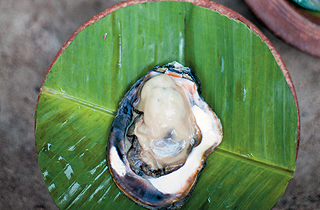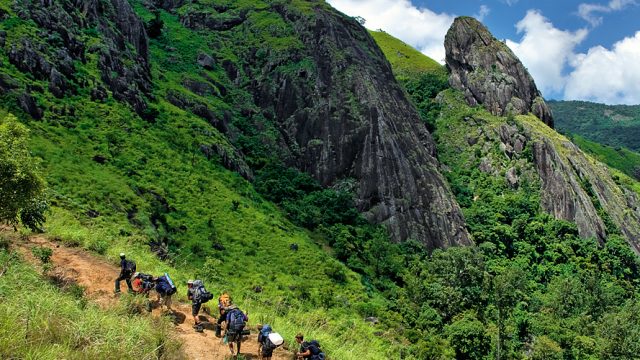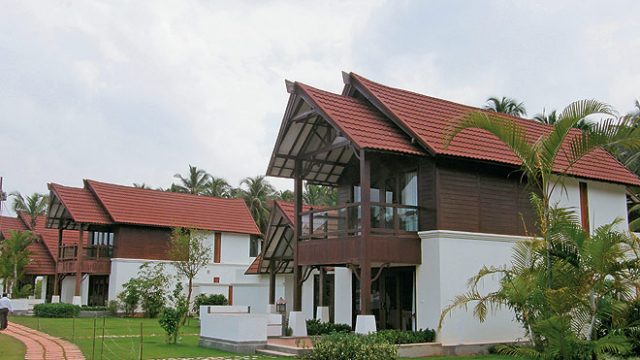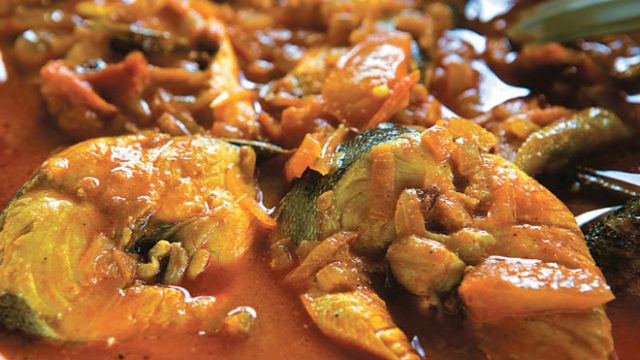A new neighbour recently announced the travel plan for his “last weekend as a single man”. He
India would seem like the last place on earth to have a place as uninhabited as my neighbour would like it. This is a country whose people live even in mangroves with man-eating tigers. But finding a place that’s quiet even when populated is not as difficult as accepting it, and knowing that a-place-no-one-else-knows-exists will rarely come with hotel soap and towels, room service and infinity pools, black coffee and brown bread.
Fittingly, a region that I find specialises in living it down perfectly is in a place three times more densely populated than the rest of the country. That a state as tiny and toured as Kerala would still have beaches that only locals use is not only a relief, but also a bit of a ticking bomb. So it is with greatly controlled selfishness and abject fear that I present to readers of this magazine, the silence of Kasargod.
For long, I’ve been told by friends who live in south Kerala that the north is a rough place, and that Kasargod is one of the roughest. The best known folklores from the place are of the hanging of four young men in a pre-independence rebellion against the police, bloody farmers’ battles against landlords, the increasing communal tensions in the last decade and the horrors of a banned pesticide on cashew farming. A few days before I arrive, when I call Mr Gul, the proprietor of Oyster Opera, where I will stay, and he gruffly answers my queries for directions leaving me none the wiser, I unfairly think of the word a friend used for Kasargod: inhospitable. But in our very first face-to-face conversation, Mr Gul will himself say with pride, “I’m not a hospitality man,” and go on to disprove his harsh self-assessment in forty-eight hours.

Oyster Opera is in Padanna, about fifty-five kilometres from Kasargod city. En route, during one of the several long waits at railway crossings, the driver asks for directions at a teashop. Nobody seems to know it. Then I poke my head out the window, and explain that the village is called Thekkekadu. It’s an island? No reaction.
I mention it’s run by a Mr Gul. I can’t tell if I saw a glimmer of recognition or bemusement. In desperation, I start to describe a mussel farm and my photographer comes to the rescue by saying it in Malayalam: Kallumakai…um, farm.
The tea master finally points us to a lane adjacent to a furniture shop. We turn into it, winding our way closer to the distinct sound of oars hitting water.
It’s 6am, but Naanu, the cook at Oyster Opera, looks like he’s been awake for at least a couple of hours. Emerging from the tamarind aromas of the kitchen, he grabs our bags and seats us in the terracotta-floored dining area looking on to the coconut tree-lined backwaters. They’re not narrow like the famous backwaters of Alappuzha; as Naanu puts it, the space between one island and another is about “twenty-five snake boats”.
Just as we’ve downed the last bits of the grape juice (slightly fermented so it’s sweeter), he tells us our ‘floating cottage’ is ready. But after gingerly walking around for ten minutes in the quaint bamboo room literally floating on the water, I admit to some queasiness and request to be transferred to firmer ground. Naanu puts me in a cottage called ‘Mussels’ overlooking the fish pond filled with pearl spot and prawn. He is shocked that I prefer this but the next day, when I explain it was my motion-sickness, Naanu says, “Ah yes, our feet are used to playing between water and land—like frogs. You have, heh, heh, concrete feet.” Despite the sting of insult, it’s hard to disagree with a man who spends as many hours in water as he does on land.

When Mr Gul arrives for breakfast later, he warns me merrily about quirky behaviour from those working in the resort. Naanu, Mr Gul and all the staff of Oyster Opera are, first of all, residents of Padanna, having lived there for more than a generation. Secondly, they are the faces of Padanna’s claim to fame: they are among the two hundred local families successfully farming mussels in coir, an innovative method that combines two of the biggest industries in Kasargod. The trigger was Mr Gul’s panic about the heavy emigration in the district that was making the rich richer and the small farmers and fishermen poorer. He realised his home was nestled among four rivers and the backwaters, ideal for shrimp and mussel farming, which need both fresh and saline water. Spearheaded by Mr Gul in 2001 and funded by the Central Marine Fisheries Research Institute, the experiment gradually worked.
Finally, the farmers joined hands to work on the resort, building it entirely on their own. Oyster Opera—the name refers to the singing of oysters just out of the water—is Padanna’s way of showcasing its stunning locale and community spirit. Everyone from the chef, sous chef, waiter, boatman and driver treats the resort like an extension of his or her home. And they feed their guests till they burst.

There was much feeding in Padanna, so superb I nearly wept. Sitting once again by the cool backwaters, I devour a breakfast of pola, a steamed cake made of rice and fermented coconut water (a traditional fast-breaker in Muslim homes here during Ramzan), and kilaachipolichathu, a soft-as-clouds crêpe made of the foam from churned raw rice paste, both drenched in delicately sweet coco-nut milk. There is puttu-kadala curry and appam-stew too, but they are beaten hollow by their less well-known northern counterparts. I wash that off with a sublime sulaimani chai, a black tea with cinnamon and a spritz of lemon. Then, I set out to work up an appetite for lunch.
About thirty-five kilometres away is the Bekal Fort, one of the biggest in South India and, for me, the most evocative. As a movie junkie, I had been obsessed with this fort since Arvind Swamy stood on its citadel lip-syncing to A.R. Rahman’s song of eternal love in Bombay. It wasn’t Swamy’s portrayal of painful separation that got me. It was the mossy, rain-drenched fort walls that a burqa-clad Manisha Koirala runs along and the white anger of the sea against the weathered rocks. If gut-wrenching nostalgia had a form, this would be it.
So imagine my joy when I entered Bekal, and found it just as stunning as it was in its celluloid avatar. Armed with a handful of brine-soaked gooseberries sold outside the fort, the photographer and I walked along the massive twelve-metre-high walls, built of the same porous rust-coloured laterite bricks most homes in Kasargod still use. Built to the very tip of the coast by Malabar’s Sivappa Naik in the seventeenth century, it seems to rise up from the Arabian Sea. Every circular bastion sits on a natural fortress of rocks. The soldiers then did not have guns or much armoury, but an ASI plaque reminds me that the unparalleled view from here helped look out for invading Portuguese ships. The tall weeds, whistling in the coastal wind all over the fort’s forty acres, are a refreshing change from the mundane lawns of most ASI-conserved monuments. Through this foliage, thin walkways lead from Bekal to the namesake beach below the observation tower.
Despite being the most popular beach in Kasargod, being twenty kilometres away from the city has its advantages. The sands of Bekal are spotless, and the water a riot of purples and oranges from the sunset, not cola bottles. Close to the fort, but away from the rocks, boats are lined up for the next morning’s fishing expedition. Some daredevils brave the thrashing waves now, while other fisherfolk kickback with their kids. A few college boys from Bangalore run screaming—full-length denims and all—into the water, while a group of high school girls in hijabs roll their eyes from the shore. I find a log to sit on and stare at nothing in particular.
Back in Padanna, we take a walk around the village. A typical Kerala village is more urbanised than those in the rest of the country, and in Thekkekadu too that is the case. The houses are concrete and painted bright, but all of them have proud gardens and backyards packed with plantain, berry bushes and lemon trees. The village is flanked by the backwaters and a wide river, so every now and then a bridge appears. Thekkekadu, serene though it might be, could never pass off as a sleepy village. Red flags and a dismantled wooden stage suggest a recent political rally. Large sickle and hammer logos embedded with colourful mosaic chips on the road remind you of the legacy of communist agitations.

Narayan, Padanna resident-cum-boatman, knocks on my door the next morning with a flask of tea. “It’s 7am. It’ll get hot soon,” he waves. In five minutes, we’re rowing in the backwaters. The first ferry is yet to arrive: at island jetties along the backwater, people wait, bathed, holding handbags and umbrellas. After twenty minutes, Narayan stops at a bank. I can hear the sea in the distance. We slosh across a shallow lagoon and walk through the backyard orchards of nine homes to suddenly arrive at a beach. This one has no name, but lest that spook the tourists, Mr Gul has named it Sandwich beach. Creepers run like a prickly, flower-studded bed all along the back of the beach, where villagers have spread out copra.
I spend all morning at this beach, gaping endlessly at the luminescent yellow crabs—one every twenty metres—scurrying just along the periphery of the waves, seeming to challenge the sea to swallow them up. Just as I think they’ve disappeared, the waves spit them out on the sand and the endless game begins again.

At lunch time, the resort is abuzz. In the outdoor kitchen area, an elderly woman cleans the fresh seafood catch. In half an hour, an equally vegetarian and non-vegetarian meal is served. Prawn masala, squid fry, crab curry, matthi molagittathu, karimeen pollichathu and oyster in a ricepuff. Aviyal, beans, bittergourd, drumstick, beetroot, just out of the stove full of curry leaves, red chillies and coconut shavings. All served with a large portion of rice, tapioca upma and a mother’s persuasion. “Chhe! Is this your capacity?” scolds Narayan when I sit back holding my stomach. Later, as I’m still immoveable on my chair, he tells me to go work it off at a Theyyam performance.
The Someswari kshetram five kilometres away is preparing for a forty-eight-hour-long Theyyam. This ritual art of northern Kerala depicts the fierce form of all gods, but especially Chamundi. Lal Panicker, a twenty-eight-year-old who would be Chamundi that night, with the elaborate headgear and red facial make-up, has been doing this since he was five. A BTech graduate, he hopes to find a banking day job, but Theyyam is his way of making sense of his world. “When my face is painted and the bells are tied to my ankles, the way my toes grab the sand, the way I feel about my presence in this place, has no match,” he says, sitting down to paint his face. “Do you know if this place’s soul is land or water? Can you decide if we are bodies or spirits? I love that we all live in a confluence.”
There is an amphibious nature to Kasargod, and especially Padanna: an easy juggle of liquid and solid, of the known and unknown, of ideology and practice. People seem to give themselves up to nature, living in its precarious balance, knowing that is how you make the most of it. The food, the diversity, the old and new struggles, all even out in the tide.
The information
Getting there: By road I took a luxury bus to Kannur (redbus.in) from Bangalore and then a taxi to Kasargod town. You can take a taxi from Mangalore to Kasargod. You can take a taxi to Padanna from both Kasargod and Kannur. By train take the Kannur-Yeshwantpur Express, which leaves Bangalore at 8.55pm and reaches Payyanur at 10.40am. From there, take a taxi to Padanna. From Mangalore, trains are frequent to Cheruvattur, from where Padanna is only 8km away.
Getting around: Autos and taxis are best. For tours to villages, you’ll need to take the ferries (6.30am–5pm) or walk.
Where to stay: The community-run Oyster Opera (0467-2276465, oysteropera.in) on Thekkekadu island is rustic, scenic and eco-friendly. It has nine wood-and-laterite cottages—one of them is floating on a fish pond and another is a tree house! Eat everything they serve you and go everywhere they take you. The villagers who run the resort know this place better than anyone else.
Kanan Beach Resort, in Nileshwar, Kasargod (2288880, kananbeachresort.com), has airy north Malabar villas, most of which overlook the ocean. Ideal for large groups. The Neeleshwar Hermitage, also in Nileshwar (2287510, neeleshwarhermitage.com) is an eco-style resort with 18 cottages and a beach restaurant.
What to see & do: Standing majestically on a rocky beach, the Bekal Fort (8am–5pm) is the centrepiece of any trip to Kasargod district. Bekal Beach below it is spotless and 20km from the city. Near Payyanur are the Kavvayi backwaters, where you will find the popular Valiyaparamba island. Sandwich beach, near Padanna, and Kappil beach, 6km north of Bekal, are also uncrowded. Between November and December, Theyyam is performed at several temples in Kasargod and Kannur.
Oyster Opera
Leave a Reply
You must be logged in to post a comment.





